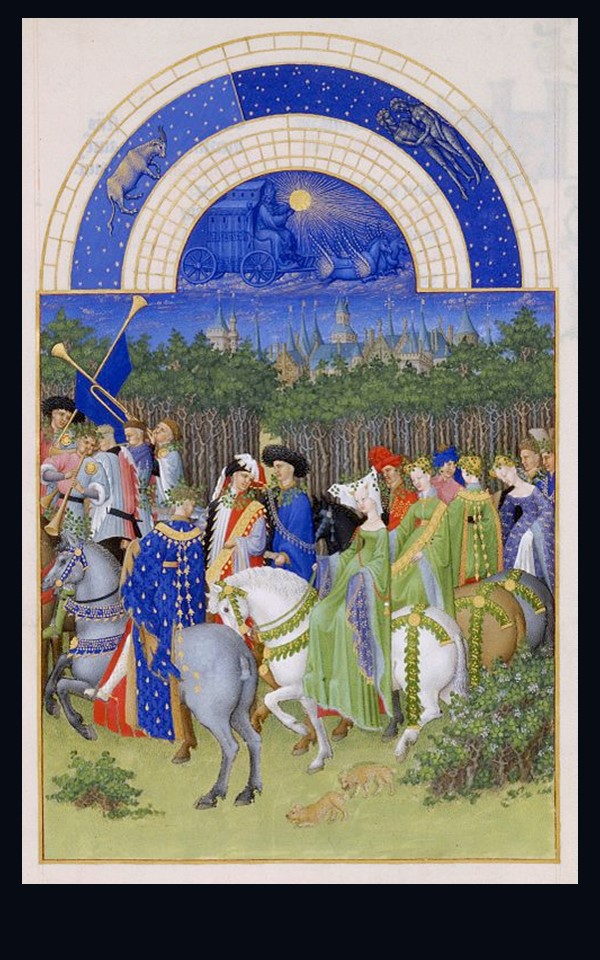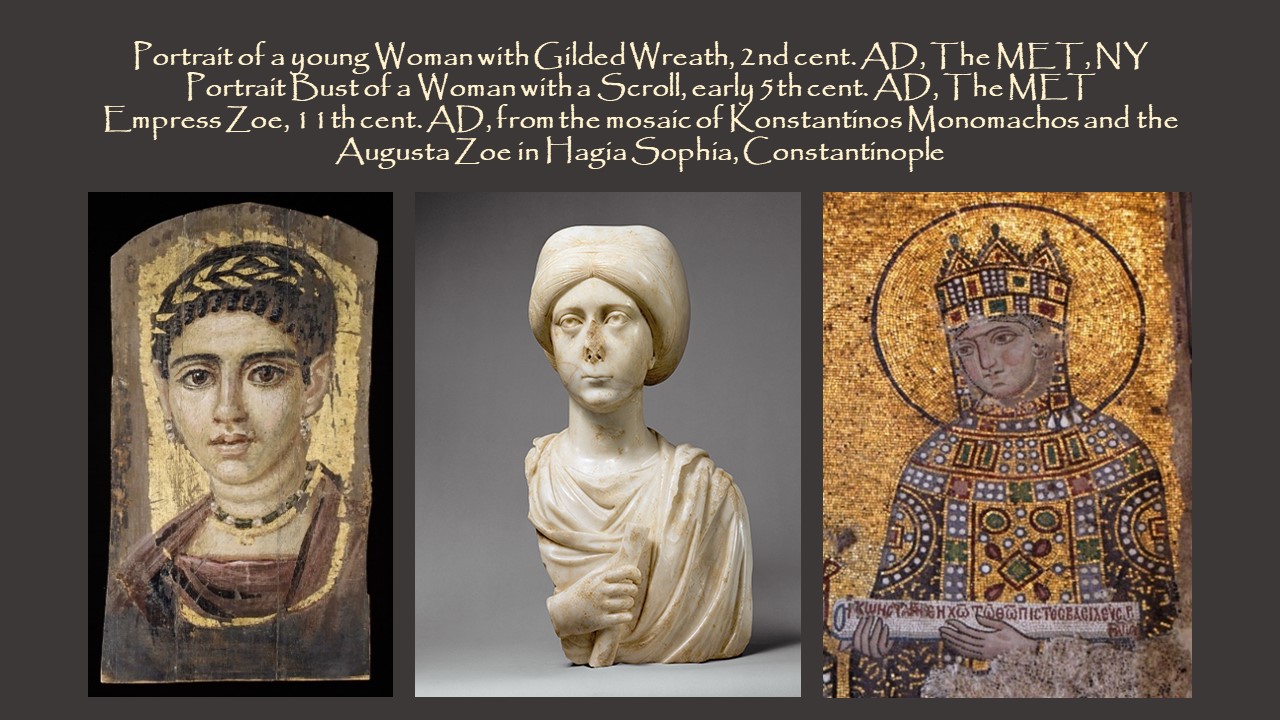
The Limbourg Brothers are among my favorite artists! The month of May in “Très Riches Heures du Duc de Berry,” the manuscript, is another favorite.
A merry group of horse-riding men and women, wearing their finest garments, May wreaths on their heads, attended by servants and entertained by musicians, this group of elegant aristocrats depicts, according to the Limbourg brothers, a May pageant. In the center of the composition, a young woman, maybe Joan II, Countess of Auvergne and Boulogne, on a white horse, is dressed in a rich traditional green garment, known at the time as “ livrée de Mai.” In front of her, with his back to the viewer, is the Duc de Berry, impressive in his gold-embroidered blue robe, is depicted turning and talking to his bride-to-be.
Paul Limbourg, the probable painter of this page, organized his composition in three levels. The Duke’s entourage occupies the first level displaying vibrant colors, subtle movement and wealth. The second level, a deep, green forest, along with two indications of shrubbery in the very front of the picture, creates an alcove of tranquility, serenity and a sense of safety for the group of aristocrats to continue. Finally, the third level, rendered in lapis lazuli blue, indicates the possible location of this event. The rooftops of Hôtel de Neslé, the Conciergerie and the Tour de l’Horloge in the Isle de la Cité tell us we are in Paris, it’s the 1st of May and it’s time to celebrate!
Herman, Paul, and Johan Limbourg, c. 1385 – 1416
Très Riches Heures du Duc de Berry, the month of May page, c. 1412-1416, manuscript illumination on vellum, 30 cm in height by 21.5 cm, Musée Condé, Chantilly, France
For more information, please check http://www.visual-arts-cork.com/famous-paintings/tres-riches-heures-duc-de-berry.htmhttps://artsandculture.google.com/asset/tr%C3%A8s-riches-heures-du-duc-de-berry-mois-de-mai/VgFhrcA2WNZh6A and https://artsandculture.google.com/asset/tr%C3%A8s-riches-heures-du-duc-de-berry-mois-de-mai/VgFhrcA2WNZh6A
For a Student Activity Worksheet … Click HERE!
For a Picture (Wikimedia Public Domain) … Click HERE!
